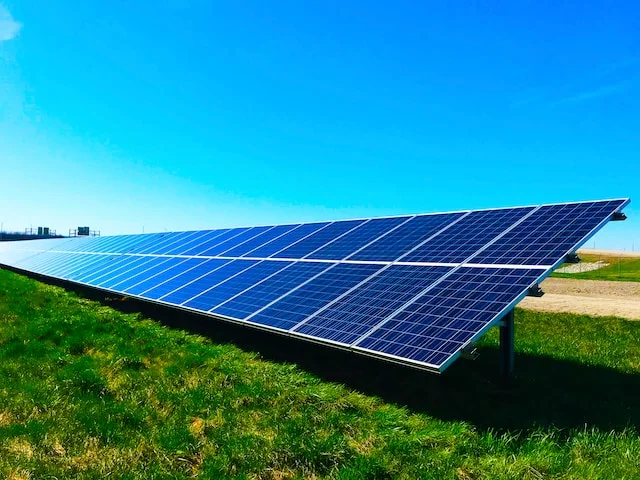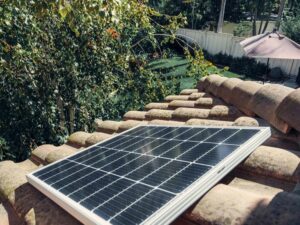As the sun’s diligent workers, your photovoltaic panels tirelessly convert light into electricity, but even the most steadfast labourers need a tune-up now and then. You mustn’t neglect them; think of maintaining your solar system as caretaking a garden, it’s not just about the initial planting but also about the regular upkeep.
You’ll need to inspect for physical damage, ensure your panels are clean, check inverter performance, and monitor energy production to prevent the decay of your system’s efficiency. Remember, debris and dust are the silent adversaries of your solar harvest. By keeping an eye on the health of your panels and trimming back any obstructive foliage, you’re not only safeguarding your investment but also ensuring it continues to provide the bountiful energy yields you’re counting on.
As you consider the steps necessary for the long-term care of your solar array, there are subtle nuances and expert tips that could make all the difference in harvesting the sun’s full potential.
Listen To The Summary
Inspecting for Physical Damage
To ensure your photovoltaic system’s longevity, it’s crucial to regularly check for any signs of physical damage such as cracks, scratches, or warping on the solar panels. These imperfections can significantly affect your system’s performance or power output.
You might be wondering, ‘How often should I inspect my solar panels?’ An annual inspection is typically recommended, but it’s also wise to examine your panels after extreme weather events that might cause unexpected damage.
When you’re inspecting your solar panels, you’re not just looking to maintain solar efficiency; you’re also working to prevent escalating maintenance costs. Identifying issues early means you can address them before they worsen or spread, potentially saving you money and hassle in the long run.
Keep in mind, that solar panel maintenance isn’t just about the panels themselves. Ensure the mounting structure and wiring are intact, as these components are vital to the overall health of your solar panel system. While some damage might be visible from the ground, consider hiring a professional for a thorough inspection, especially if you suspect hidden issues.
Cleaning Solar Panels
Just as you regularly wash your car to maintain its sheen and performance, cleaning your solar panels with a soft-bristled brush and non-abrasive cleaner 2-4 times a year is essential for ensuring their optimal function. Dirt, debris, and even bird droppings can significantly reduce your panels’ energy output.

You might wonder, how often do solar panels need cleaning? Well, the simple answer is: that it depends on your environment. However, the general recommendation is to clean your solar panels every few months to maintain peak performance.
It’s best to perform solar panel cleaning early in the morning or on an overcast day to prevent the panels from getting too hot. Hot surfaces can cause water to evaporate quickly, leaving mineral deposits or even causing damage.
When snow blankets your panels in winter, gently use lukewarm water and a squeegee to clear them, as hot water could crack the cold glass.
Checking Inverter Performance
While keeping your solar panels clean ensures they can absorb the maximum amount of sunlight, regularly checking the inverter’s performance is key to guaranteeing that this energy is efficiently converted for use in your home.
Your solar inverter is the heart of your solar power system, and monitoring its performance is crucial. Here’s how to keep tabs on your system’s efficiency:
- Daily Checks: Look at the inverter display each day. It should show the amount of energy being produced. If numbers seem off, it’s a red flag.
- Long-Term Monitoring: Use solar panel monitoring systems to track energy production over time. This helps you spot trends and address issues early.
- Performance Alerts: Many modern solar inverters can send alerts when performance dips below expected levels, so you can act swiftly.
- Professional Inspections: If you’re unsure about the health of your solar inverter, don’t hesitate to reach out to your solar panel installer for a thorough inspection.
Ensuring the inverter operates within the power output warranty specifications is essential for the long-term health of your solar systems.
Monitoring Energy Production
Integrating a monitoring system into your photovoltaic setup is essential, as it provides real-time insight into your solar panels’ energy production and highlights any potential issues that could impair their performance. You’ll want to keep a close eye on the output of your solar system to ensure that everything is running smoothly and efficiently. A decrease in performance could suggest obstructions like leaves or dirt on your panels or even a malfunction that needs your attention.
Monitoring systems can notify you of such issues, allowing for timely solar panel maintenance. This way, you can swiftly address problems and avoid prolonged downtimes. Plus, understanding the external factors that impact your solar energy production is invaluable. It’s not just about the immediate benefits; it’s also about ensuring your PV systems maintain peak efficiency over their entire lifespan.
To give you a clear picture, here’s a table summarizing the importance of monitoring:

|
Benefit
|
Description
|
Impact on System
|
|---|---|---|
|
Real-Time Data
|
Tracks daily energy production
|
Optimizes performance
|
|
Issue Identification
|
Alerts to malfunctions or obstructions
|
Prevents decrease in performance
|
|
Maintenance Trigger
|
Indicates when maintenance is needed
|
Extends panel lifespan
|
|
Performance Analysis
|
Helps understand external performance factors
|
Improves energy yield
|
|
Long-Term Efficiency Tracking
|
Ensures panels are efficient throughout their life
|
Maximizes return on investment
|
Trimming Obstructive Foliage
To ensure your solar panels capture the sun’s rays without hindrance, it’s crucial to regularly trim back any trees or vegetation casting shadows over them. Maintaining your solar panels isn’t just about keeping them clean; it also involves managing the environment around your rooftop solar installation.
Here’s what you need to know about trimming obstructive foliage:
- Monitor Vegetation Growth: Keep an eye on the growth of trees and shrubs around your home solar panels. If you notice branches beginning to loom over the panels, it’s time to trim.
- Prune Regularly: Establish a pruning schedule. Trees grow at different rates, and periodic checks will ensure that no new shadows are compromising your solar systems’ efficiency.
- Maintain Clearances: Ensure there’s adequate clearance between the foliage and your solar panels. This prevents shading and avoids debris accumulation, which can be a common solar panel maintenance issue.
- Consult Professionals: If you’re unsure about how to safely trim the foliage, or if the trees are large, consider hiring a professional from a reputable solar company. They’re trained to avoid shading while installing solar panels and can advise on maintaining clearances without risking damage to your system.
Frequently Asked Questions
What Maintenance Does a Photovoltaic System Require?
You’ll need to perform panel cleaning, system inspection, wiring checks, and inverter testing. Ensure mount integrity, conduct energy monitoring, and use safety equipment. Regularly perform performance analysis, grounding verification, and maintain surge protection.
Do PV Panels Need Maintenance?
Yes, PV panels need maintenance, including solar cleaning, efficiency monitoring, and angle adjustment. Seasonal checks, warranty validation, and performance tracking are crucial, along with regular safety inspections, component upgrades, voltage testing, and troubleshooting tips.
Do Photovoltaic Devices Require a Lot of Maintenance?
You’ll find photovoltaic devices don’t need excessive upkeep. Regular solar cleaning, efficiency monitoring, and component inspection, including cable checking and junction examination, alongside inverter servicing and safety audits, ensure sustained energy output and minimal degradation.
Which 4 Four Types of Maintenance Processes Is Required in the Solar PV System?
To keep your system optimal, you’ll need panel cleaning, efficiency monitoring, inverter checks, and wiring inspection. Don’t forget safety audits, shading analysis, component upgrading, performance tracking, grounding verification, and thermal imaging. Stay proactive!
Conclusion
In conclusion, keeping your photovoltaic system in top shape is key to harnessing the sun’s power efficiently. Regularly inspect for damage, clean panels gently, and monitor your inverter’s performance.
Stay vigilant with energy production tracking and don’t let overgrown foliage cast a shadow on your solar gains. With these steps, you’ll ensure your system’s longevity and performance, safeguarding your green investment.
Remember, a well-maintained solar setup doesn’t just save you money, it also supports a sustainable future.


